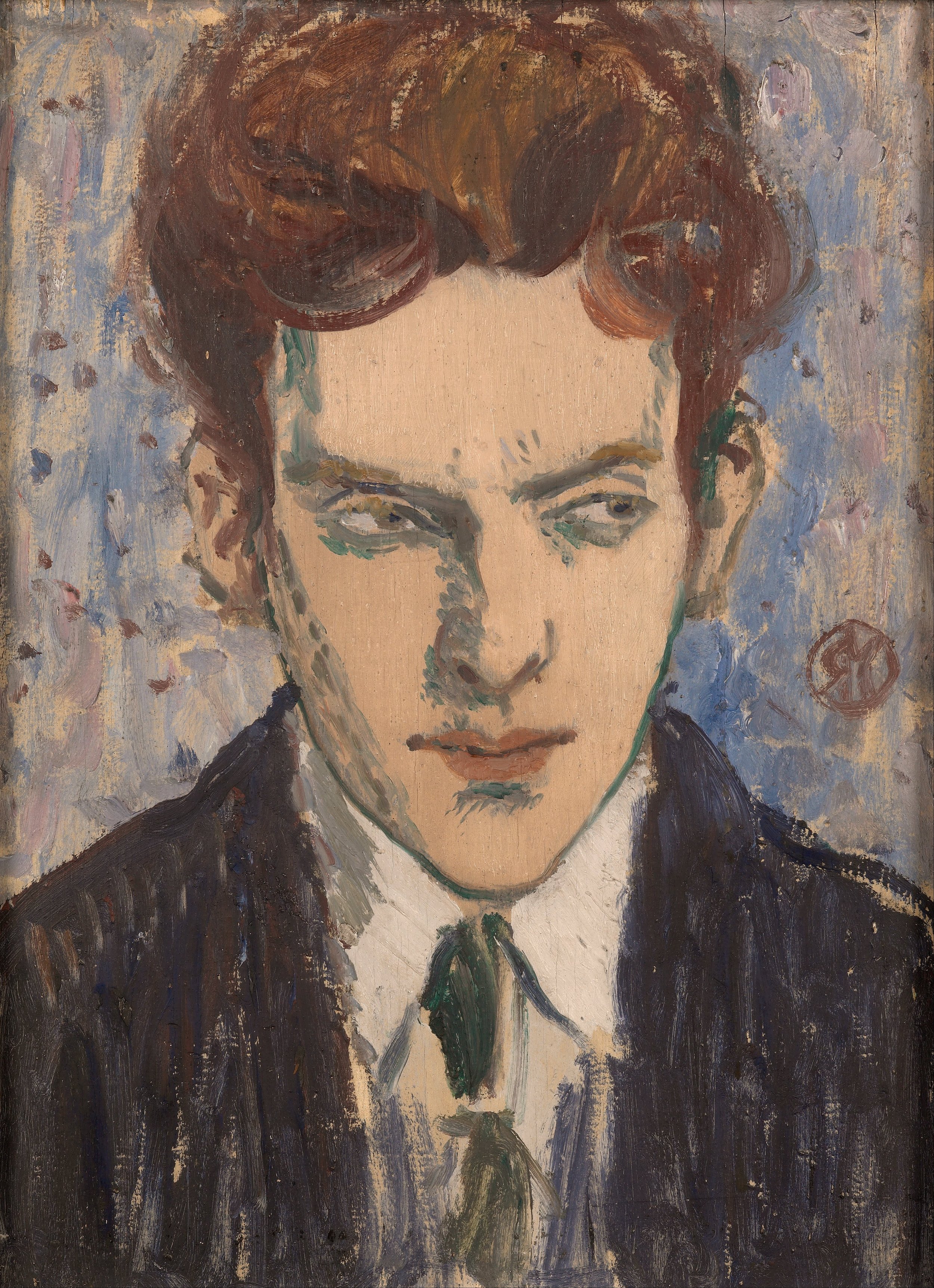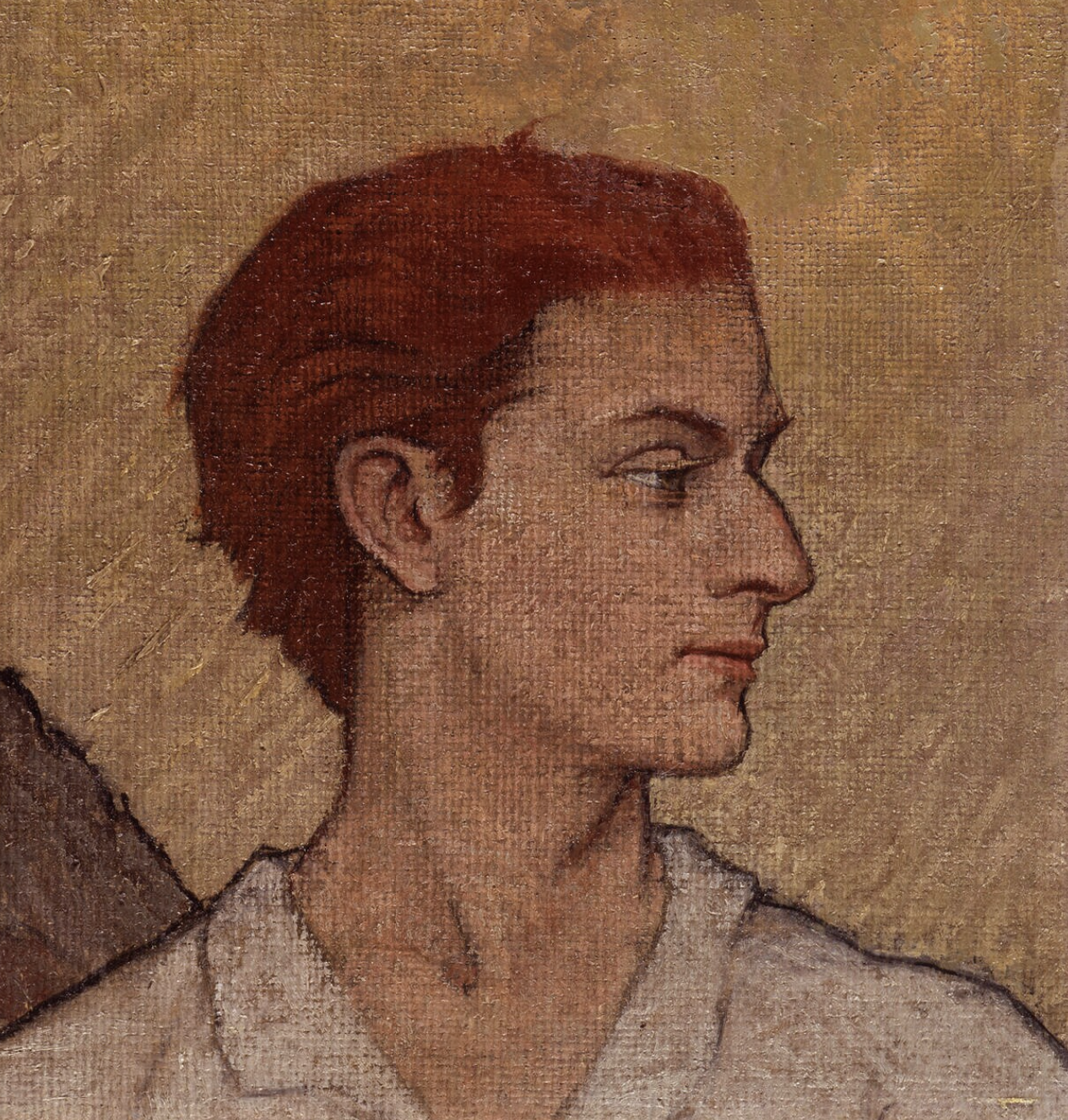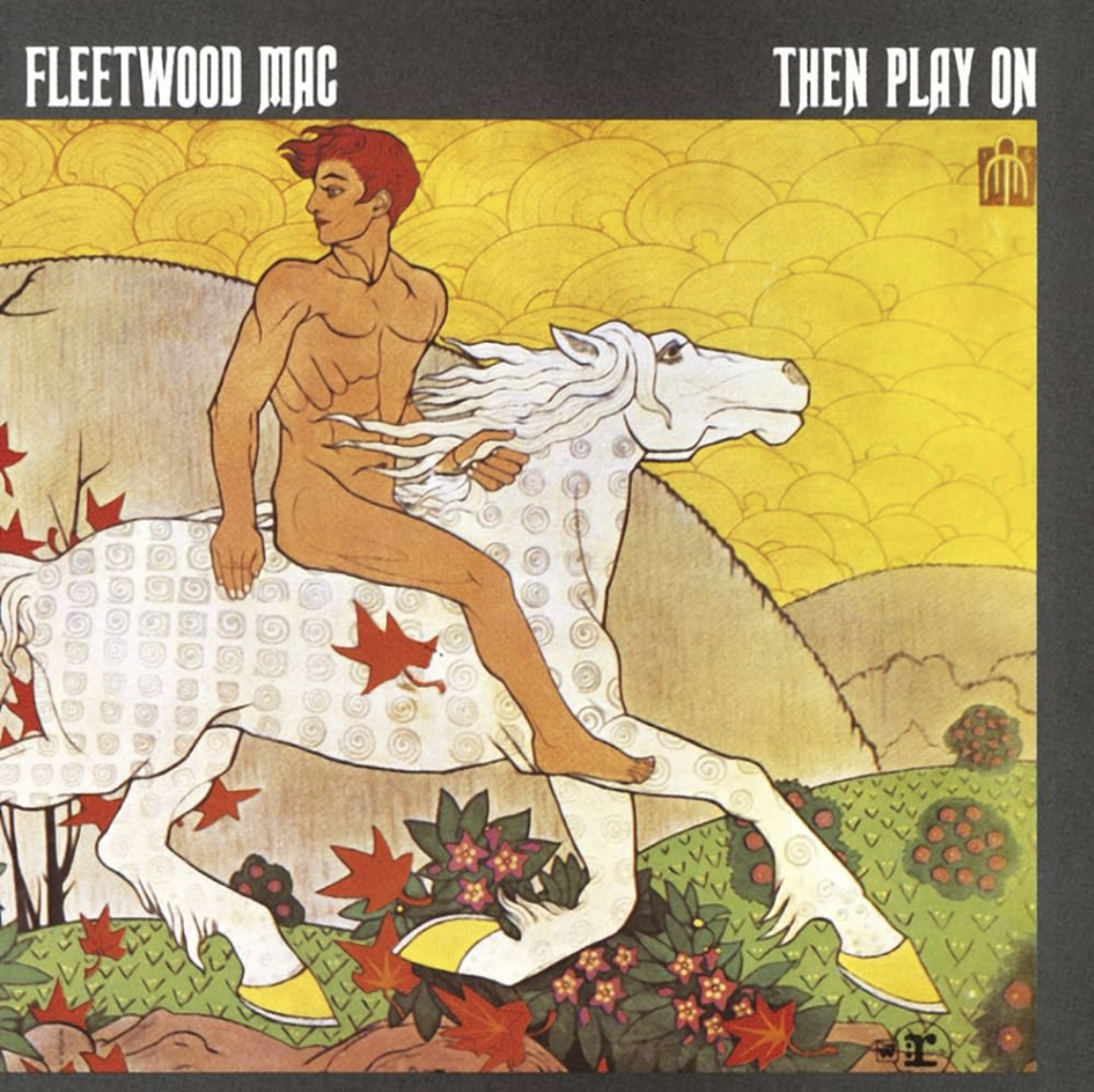E. McKnight Kauffer: A Lost Portrait
I am a fan of the work of American designer and artist E. McKnight Kauffer (1890–1954), best known for the design of posters for the London Underground. His full range of work was on display last year in an exhibition at the Cooper-Hewitt, Smithsonian Design Museum in New York, Underground Modernist: E. McKnight Kauffer.
Curious about Kauffer’s final years in New York City, in 2016 I tracked down his unmarked grave in the Bronx. Plans to erect a memorial stone on the site faded because of a lack of funding.
Unexpectedly, this August I came across an unfamiliar image of E. McKnight Kauffer in the New Mexico Museum of Art in Santa Fe. I was in the exhibition An American in Paris: Donald Beauregard, which includes a large painting with the title “Portrait of an Artist.” The portrait’s label describes the subject as an unknown acquaintance of Beauregard and a young art student dressed for the Parisian art academies, painted ca. 1912.
Portrait of an Artist by Donald Beauregard, 69 x 45 inches, New Mexico Museum of Art
The strongest evidence that the portrait is of Kauffer is visual; the likeness in the painting is very similar to photographs of Kauffer. Even the clothes in the 1915 photo below are identical to the ones he is wearing in the painting. Kauffer was known for his reddish hair and tall, lanky build.
E. McKnight Kauffer, 1915
Photograph from a temporary American citizenship application document (grahamtwemlow.blog)
E. McKnight Kauffer, ca. 1920
Photograph by Maud B. Davis (Collection of Simon Rendall)
Other compelling evidence is timing. Beauregard and Kauffer were both in Munich around July through September 1913. Beauregard was there to paint and Kauffer was on his way to study art in Paris. Kauffer’s ship from the U.S. had landed in Venice and he and a friend walked (or walked only part of the way) from Venice to Munich. The route to Munich goes through the area of the southern Alps known as the Tyrol, and in the portrait Kauffer is holding a Tyrolean hat, a traditional green felt hat with a feather or sprig of hair in the side. The portrait was almost certainly painted while the two young artists were in Munich. Beauregard complained of having to paint indoors in Munich and may have painted Kauffer in a studio and then added the landscape from memory, or based it on sketches made earlier.
Also, the men shared connections to Utah. Beauregard was born in Utah and graduated from the University of Utah. Kauffer, though born in Montana, was traveling in Europe with the financial support of a professor at the University of Utah. Similar backgrounds and possible social connections may have eased their acquaintance in Munich.
Donald Beauregard, 1909
It would not have been unusual for Kauffer to have posed for Beauregard; he posed for other artists as well. His striking looks certainly drew attention, but he may have modeled for pay because he was very poor in his youth.
Other images of Kauffer include these, below top left then clockwise: Theodore J. Keane, 1913; Raymond McIntyre, ca. 1915; Maxwell Ashby Armfield, ca. 1915 (now lost; used as cover art on Fleetwood Mac’s third album); Maxwell Ashby Armfield, 1915
Beauregard returned to the U.S. in the fall of 1913, died of cancer in 1914, and left his paintings to his patron, one of the founders of the New Mexico Museum of Art, where the portrait has been since.
The Beauregard painting of Kauffer has been known by an alternate title, “Portrait of a Friend.” I hope they were friends and am grateful that their brief intersection in Munich, when Kauffer was just beginning his impressive career and Beauregard was near the end of his short life, was captured in this impressive portrait.
A 1925 poster by Kauffer at the 2023 Poster House exhibition Art Deco: Commercializing the Avant-Garde
Thanks to Susan Bednarczyk for introducing me to the painting and researching Beauregard in Santa Fe. Angela Voulangas and Emily Orr helped with analysis of the painting and research in New York.








